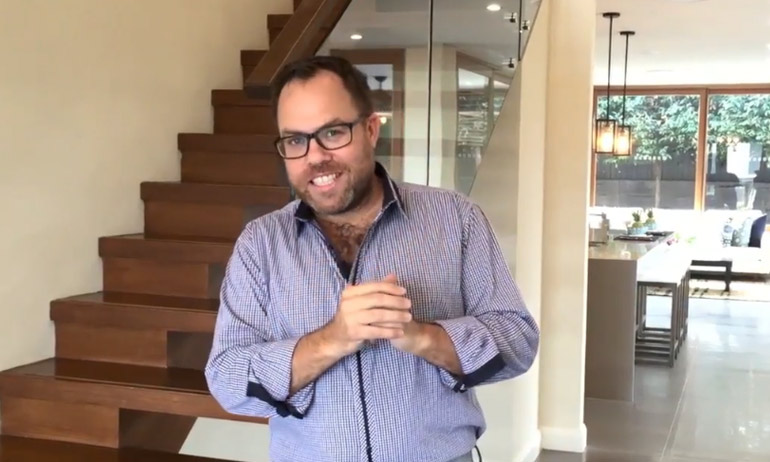
If your list of New Year’s resolutions begins with ‘become a homeowner’, then congratulations! Buying or building a new home is a big step, it’s true, but it’s also a super exciting one. To help ensure you start off on the right foot, take a moment to consider these important points.
Exclusive to Eden Brae Homes, James Treble interior design and celebrity stylist guides you through the process of choosing the right stairs for your new home.
Transcript
Today I’m going to give you some insights and ideas to help you get the right staircase for your home, based on your house design, personal taste and of course your budget.
Before we get started I want to talk about the components of the staircase so we all understand how it all works together.
First, we have the treads, the parts we walk on when we go up and down the stairs. The risers are the parts we see when we look at the staircase front on, and they sit in between the treads. On the sides are the structural components of the staircase, called the stringers. The treads and the risers are usually engaged into these. Next are the vertical posts, and they hold the handrail on top, and between the posts are the balusters. Each of these components come with many options varying the look, feel and cost of your staircase.
This picture below shows an example of a floating staircase design. It’s called so because the treads just ‘appear’ to float, as they are not connected on either side into a stringer. The posts and balusters are in stainless steel. They’re in a square profile and allow lots of light in; plus they add a little bling. The handrail is also in a square profile, matching the rest of the design and it’s stained to match the treads. As you can see this staircase design adds to the feeling of space and lets lots of light flood in. It is an upgrade but it’s definitely adding value to your home.
This striking design is another example of floating staircase. These treads also appear to float in space, and is cleverly achieved because the structural support is actually a cut stringer underneath, similar to a spine but offset and sitting hard against the wall. This design is perfect to let in a lot of light, creating a feeling of space and adding value to your home. The components of posts and balusters are here one large frameless piece of glass, connected to the sides of the treads using stainless steel pins. The handrail is a stained piece of timber, which is also floating off the glass, again joined by stainless steel pins; a further element to this fantastic look. As you can see this combination of frameless glass, stainless steel and timber can make a striking statement for your home.
Now remember, the staircase in most cases is the first thing you see when you enter the home, and first impressions are very important. So think what’s right for you and what your needs are. Do you need storage underneath? Does your house design and location ‘demand’ a floating staircase? Should you have stainless steel wire, timber posts or maybe glass as your balustrading? Do you need to allow more light to enter the home?
Whichever option you go for, remember to do your homework. Visit a display home, collect images from magazines or online. Bring your wish-list, images and ideas to the staircase appointment; this will allow your consultant to help you to get the right staircase for your home.
